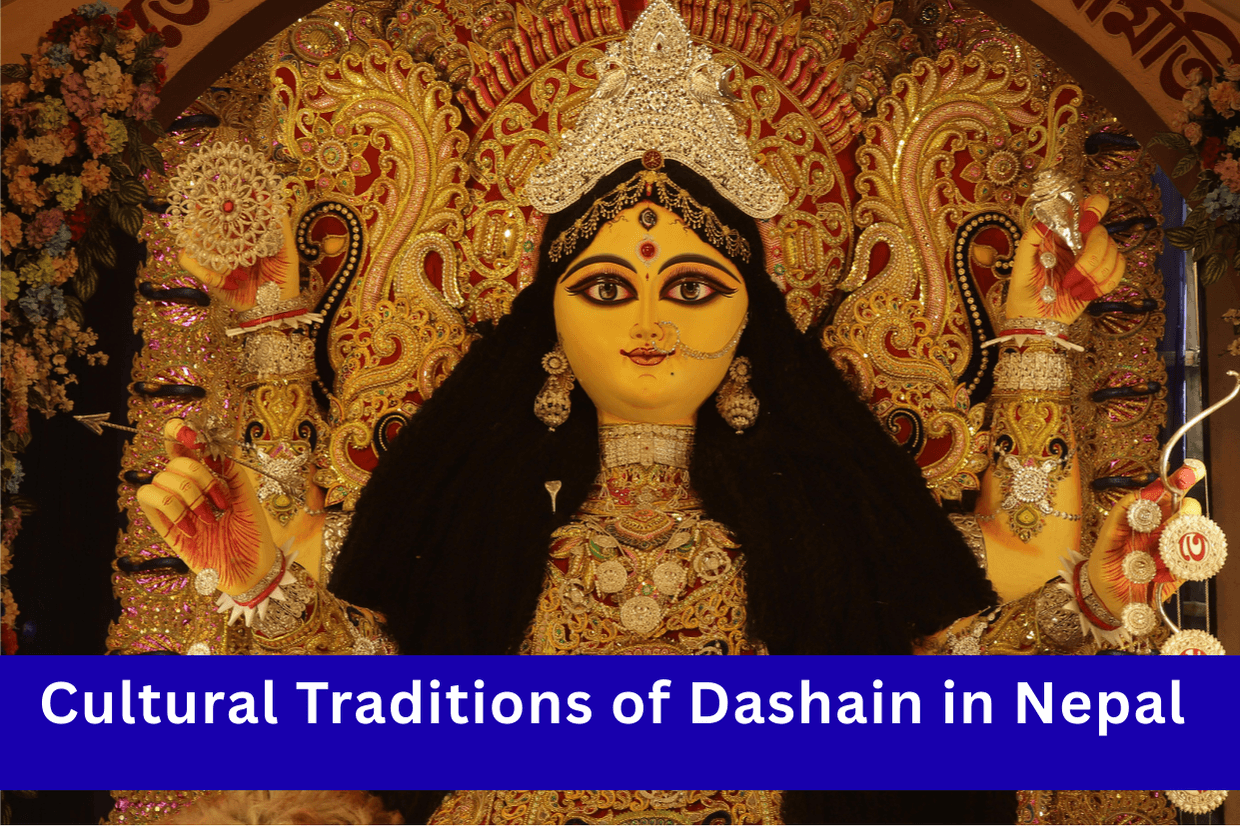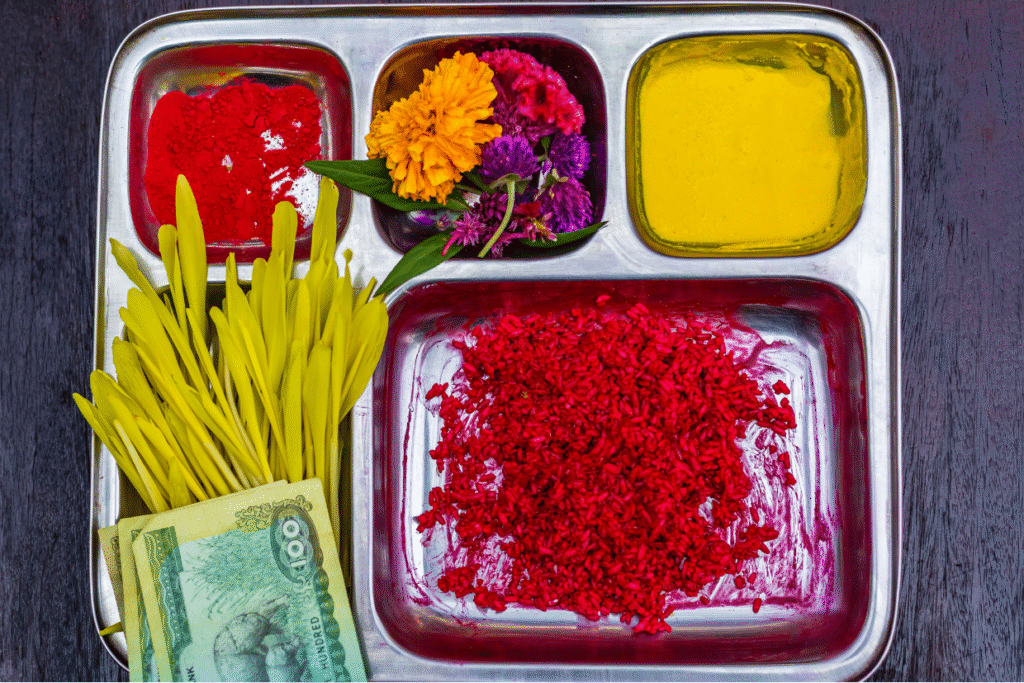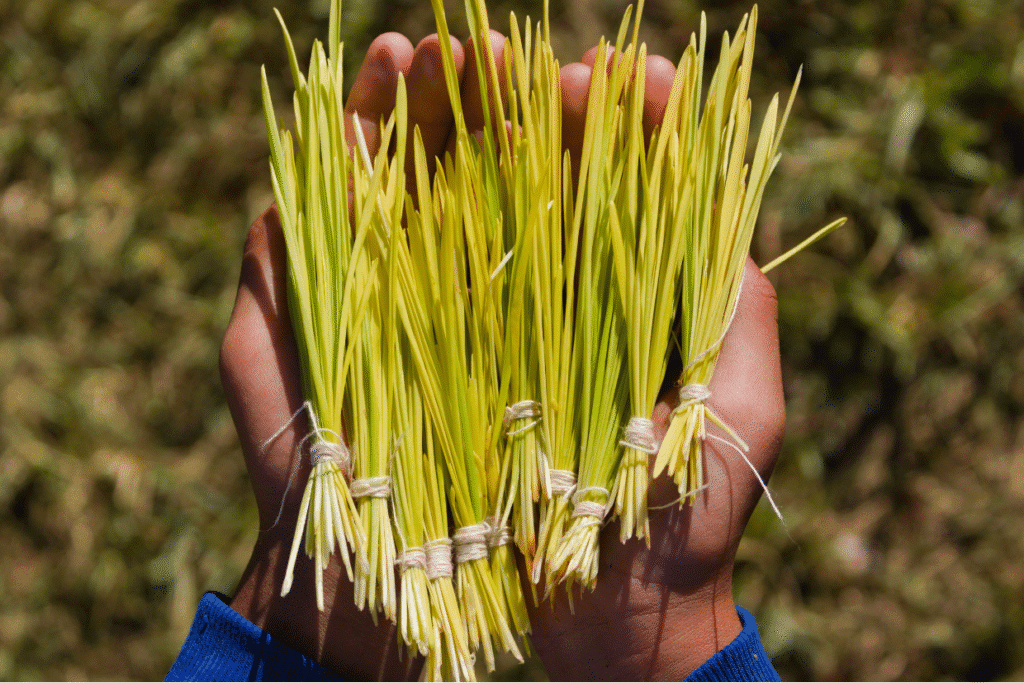Cultural Traditions of Dashain in Nepal: Tika, Jamara, and Family Blessings

Dashain is Nepal’s largest Hindu festival, celebrated across the country with deep devotion and vibrant traditions. Marked by family gatherings, the application of red tika on foreheads, and offerings of blessings from elders, it symbolizes victory, renewal, and unity. Homes and public spaces are decorated with marigold flowers, traditional foods like khasi ko masu (goat curry) are prepared, and cultural activities such as kite flying reflect the joyous spirit of the festival. Observed from Kathmandu to remote Himalayan villages, Dashain represents the essence of faith, family, and national heritage in Nepal.
If you’re dreaming of experiencing Dashain in Nepal, this blog dives into its core traditions—tika, jamara, and family blessings—while uncovering unique customs like Fulpati and Linge Ping swings that make this festival unforgettable. Let’s journey into the heart of Nepal’s most cherished celebration.
Table of Contents
- What is Dashain in Nepal? A Celebration of Triumph and Togetherness
- The Sacred Ritual of Tika: A Symbol of Protection
- Jamara: The Green Sprouts of Prosperity
- Family Blessings: Strengthening Bonds During Dashain in Nepal
- Unique Traditions: Fulpati, Linge Ping, and More
- Experiencing Dashain in Nepal: A Traveler’s Guide
- Conclusion
What is Dashain in Nepal? A Celebration of Triumph and Togetherness
Dashain in Nepal is a 15-day Hindu festival held in the lunar month of Ashwin (September-October), celebrating the triumph of good over evil. Rooted in mythology, it honors Goddess Durga’s victory over the demon Mahishasura and Lord Rama’s defeat of Ravana. Beyond its spiritual core, Dashain is Nepal’s harvest festival, a time when rice fields glow golden and communities unite in joy. According to the Nepal Tourism Board, the festival sees cities like Kathmandu quiet down as millions return to ancestral homes, creating a nationwide wave of reunions.
From Ghatasthapana, when families plant sacred barley seeds, to Bijaya Dashami on the tenth day, Dashain in Nepal builds to a crescendo of rituals and festivities. It’s a time for kite-flying, bamboo swings, and lavish feasts, blending ancient traditions with modern merriment. Travelers can witness this vibrant spectacle by joining a Kathmandu Valley cultural tour, perfectly timed to capture the festival’s pre-Dashain buzz.
Why Dashain in Nepal is a Cultural Cornerstone
Dashain in Nepal is more than a holiday; it’s a celebration of unity, gratitude, and renewal. Historically, even Nepal’s royal families led grand ceremonies at Hanuman Dhoka, underscoring its national significance. Today, it resonates with Nepalis worldwide, from Bhutan to the diaspora in Western cities, making it a global symbol of heritage. For visitors, it’s a chance to experience Nepal’s soul through its most cherished festival.

The Sacred Ritual of Tika: A Symbol of Protection
At the heart of Dashain in Nepal lies tika—a vibrant red paste of vermilion, yogurt, and rice applied to the forehead by elders on Bijaya Dashami. This ritual is a sacred blessing, symbolizing protection, prosperity, and the triumph of good over evil. Families gather, youngest to oldest, as grandparents chant mantras, their voices weaving love and legacy into each tika dab. It’s a moment that feels timeless, as if Durga herself is watching over.
The tika thali, adorned with fruits, sweets, and prasad, is a feast for the senses. Elders often gift dakshina (small sums of money), sparking smiles and playful banter. In 2025, the auspicious tika time begins at 09:38 AM Nepal Standard Time, facing east for optimal blessings, as set by the Nepal Panchanga Nirnayak Samiti. Experiencing this during Dashain in Nepal is a must—join a local homestay through our cultural tours to receive your own tika from a Nepali family.
How Tika is Prepared and Celebrated
Preparing tika starts days in advance, with families mixing the paste fresh on the ninth day. The application is an art—three fingers press gently, sealing blessings. Recipients wear tika proudly for days, visiting relatives until the festival winds down. For travelers, this ritual is a gateway to Nepal’s warmth, making Dashain in Nepal an emotional highlight.

Jamara: The Green Sprouts of Prosperity
Alongside tika, jamara—lush barley or maize sprouts—is a cornerstone of Dashain in Nepal. Planted on Ghatasthapana in a sacred kalasha with sand and cow dung, these green shoots grow in the dim Dashain Ghar, symbolizing prosperity and growth. By Bijaya Dashami, they’re harvested and tucked behind ears, their yellow-green fronds a vibrant emblem of life’s renewal.
Jamara connects Nepal’s agrarian roots to its spiritual heart. During my travels with Mount Elegance Treks, I saw villagers in the Annapurna region share jamara with trekkers, recounting tales of its role in sustaining communities. It’s a reminder that even small seeds carry big dreams—a perfect metaphor for Dashain in Nepal. Want to see this up close? Our Annapurna cultural treks offer immersive festival experiences.
The Spiritual Significance of Jamara
Offered to Durga during pujas, jamara carries divine energy, believed to bless recipients with abundance. Its eco-friendly nature—grown naturally, returned to the earth—resonates with sustainable travel. Learn more about eco-conscious trekking via the Nepal Tourism Board’s trekking guidelines.
Family Blessings: Strengthening Bonds During Dashain in Nepal
Dashain in Nepal shines brightest in its family blessings, where tika and jamara ceremonies become a celebration of love and legacy. Elders, revered as wisdom-keepers, offer tailored blessings—for success, safe travels, or new beginnings—as younger members bow in respect. These moments mend old wounds and spark new dreams, uniting families across generations.
From urban Kathmandu to rural Mustang, homes brim with feasts of sel roti and spicy curries, welcoming neighbors and friends as extended kin. I’ll never forget a Dashain in Pokhara, where a grandfather’s blessing to his grandson brought tears and cheers—a snapshot of Nepal’s heart. For travelers, joining these gatherings through a family trek package offers a front-row seat to this emotional core of Dashain in Nepal.
Unique Traditions: Fulpati, Linge Ping, and More
Dashain in Nepal dazzles with unique customs beyond tika and jamara. On the seventh day, Fulpati brings a vibrant procession of banana stalks, jamara, and sacred leaves to Hanuman Dhoka, inviting divine blessings. Maha Ashtami and Navami feature intense pujas, with some communities offering animal sacrifices (though vegetarian alternatives are rising). Linge Ping swings—towering bamboo structures—send laughter soaring, rooted in ancient fertility rites.
Kite battles light up the skies, symbolizing freedom, while new clothes and card games add modern flair. In places like Langtang, folk dances under starlit skies captivate. These traditions make Dashain in Nepal a cultural kaleidoscope—experience them on our Langtang Valley treks. For respectful participation, check the Trekking Agencies’ Association of Nepal (TAAN) for ethical travel tips.
Tips for Joining Dashain Traditions
Dress modestly, seek permission for photos, and savor vegetarian feasts if offered. These small gestures ensure you honor the spirit of Dashain in Nepal while creating lasting memories.
Experiencing Dashain in Nepal: A Traveler’s Guide
Plan your visit for late September to mid-October 2025, with Dashain in Nepal peaking around October 2-12. Kathmandu offers urban vibrancy, Pokhara blends lakeside calm with festival fever, and Chitwan showcases Tharu traditions. Book flights early, as roads clog with homebound travelers. For safe adventures, pair your festival visit with an Everest Base Camp trek post-Dashain. Mount Elegance Treks curates homestays for an authentic tika ceremony experience.
Top Spots for Dashain in Nepal
- Kathmandu Valley: Temples and processions in full glory.
- Pokhara: Tika with Fewa Lake’s serene backdrop.
- Chitwan: Unique Tharu Dashain rituals.
Wherever you celebrate, Dashain in Nepal promises a journey of the heart.
Conclusion
As the final tika fades and jamara returns to the earth, Dashain in Nepal leaves a lasting glow—a testament to resilience, love, and community. From the sacred tika to the vibrant jamara and heartfelt family blessings, this festival captures Nepal’s essence, inviting travelers to join its timeless dance of tradition and joy.
To truly feel the heartbeat of Dashain in Nepal, let Mount Elegance Treks craft your unforgettable journey. Our expert guides blend festival immersion with Nepal’s stunning landscapes, ensuring every moment sparkles with meaning. Ready to wear your own tika under Himalayan skies? Contact Mount Elegance Treks today to plan your personalized Dashain adventure. Let’s make your Nepal story legendary—tika lagau, blessings barau!
Call to Action: Don’t just dream of Dashain in Nepal—live it! Inquire now for a tailored festival experience or book your cultural journey with Mount Elegance Treks. Your Himalayan adventure awaits!
